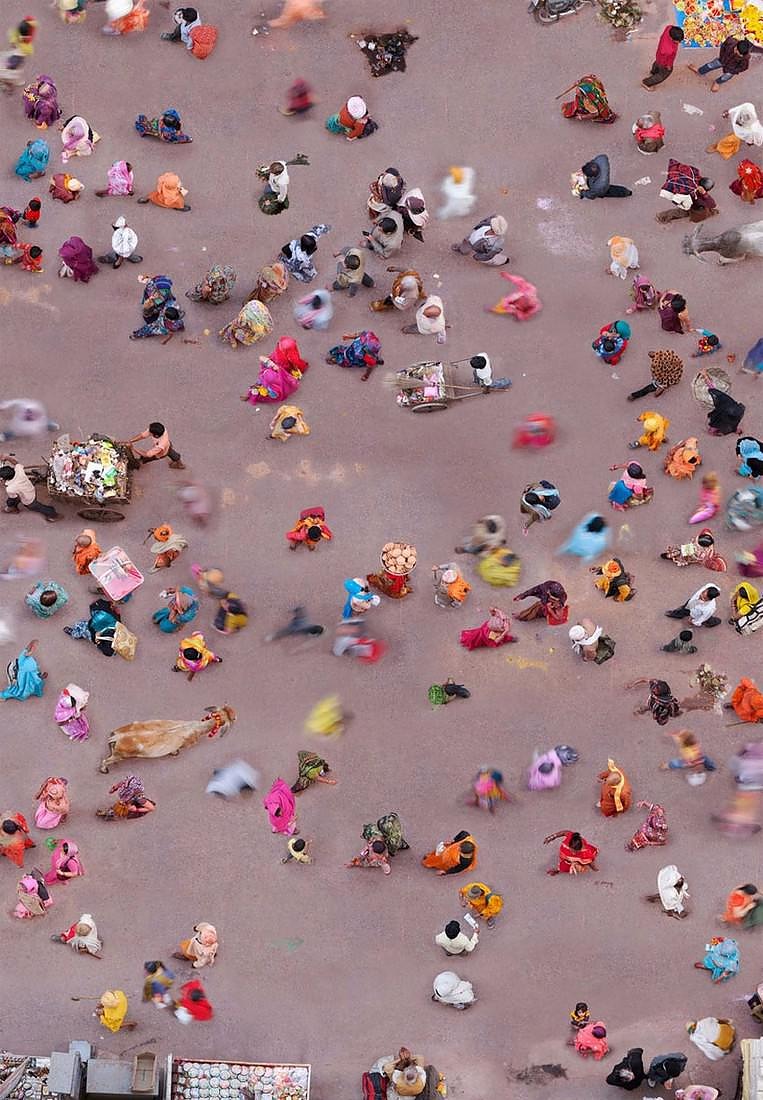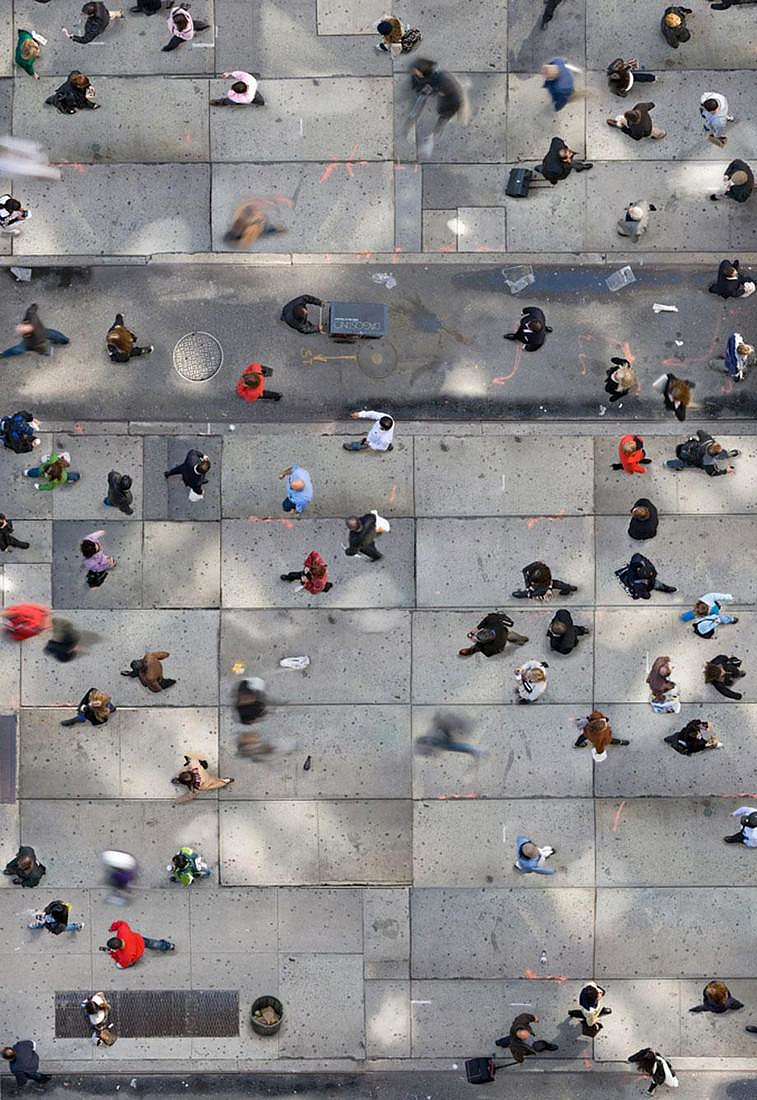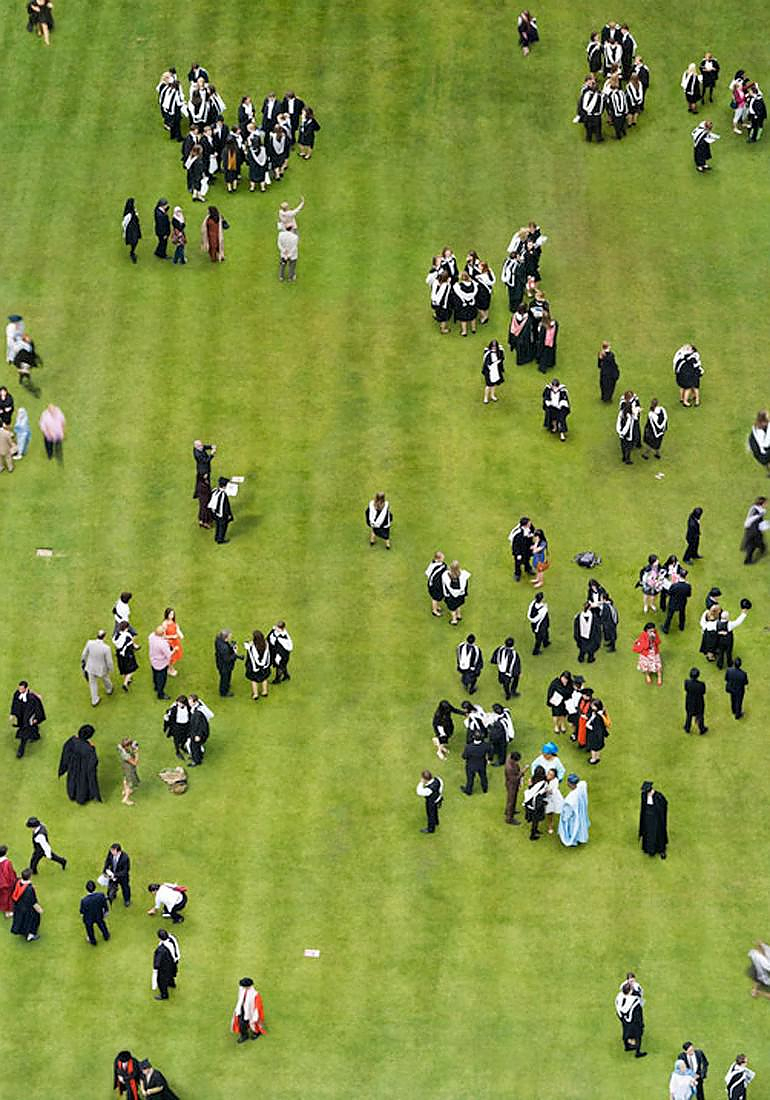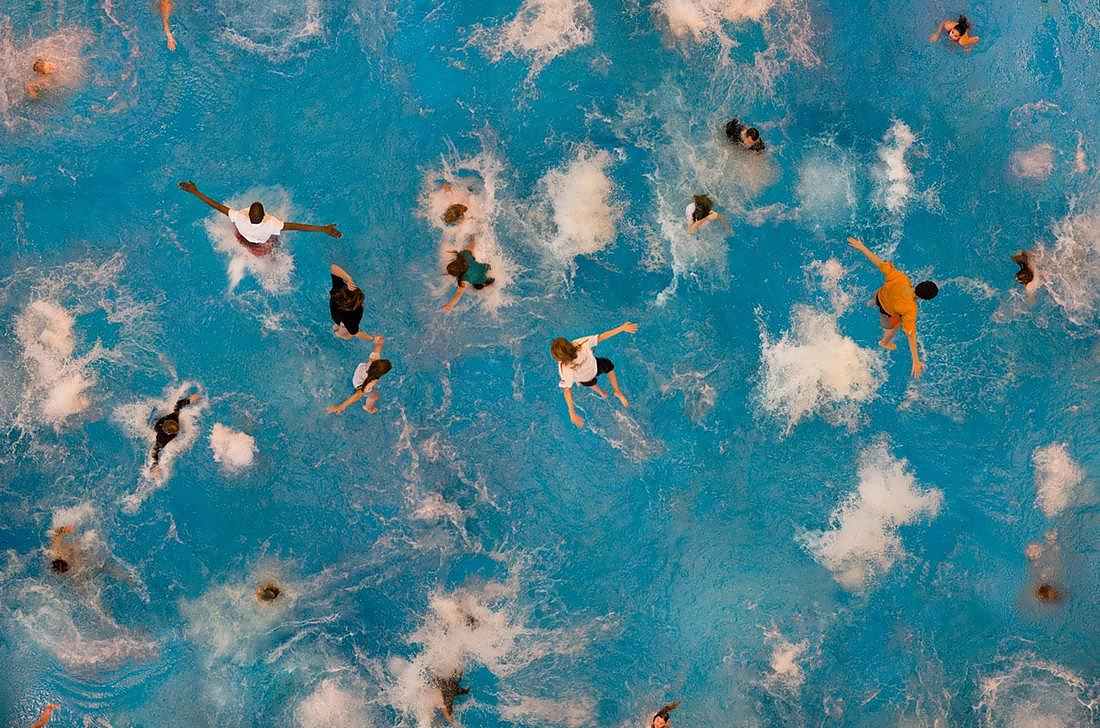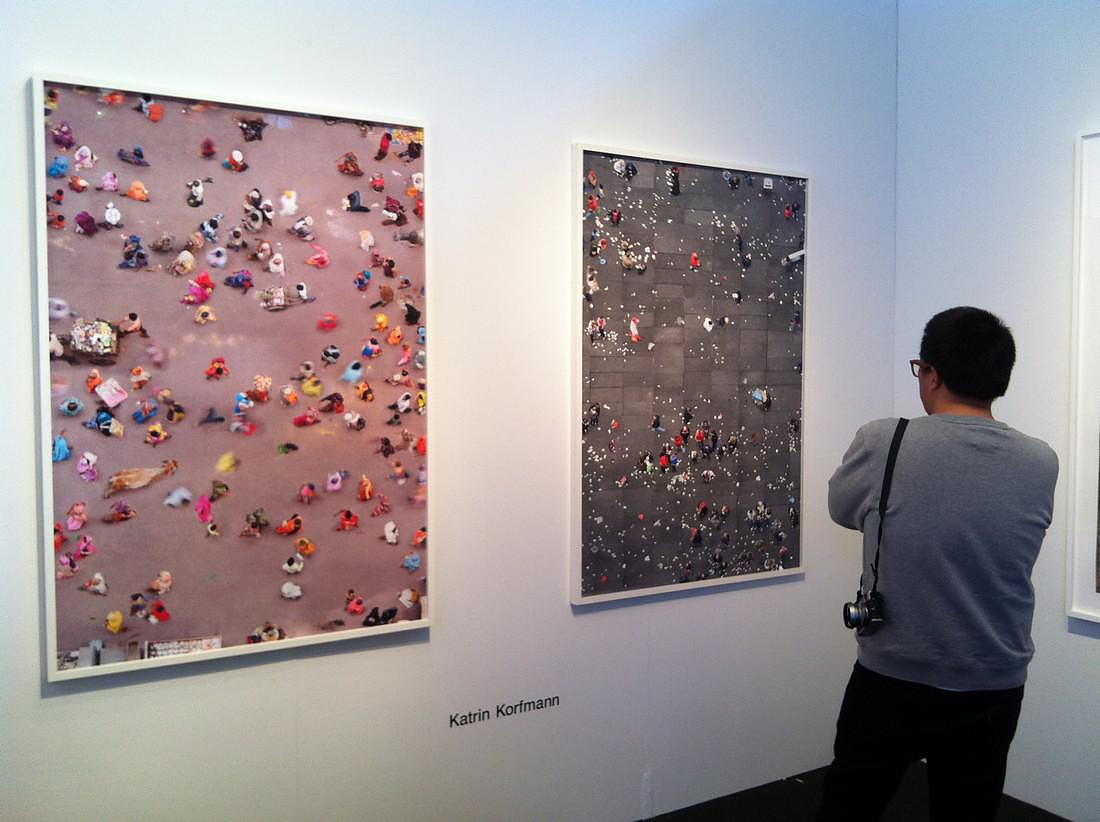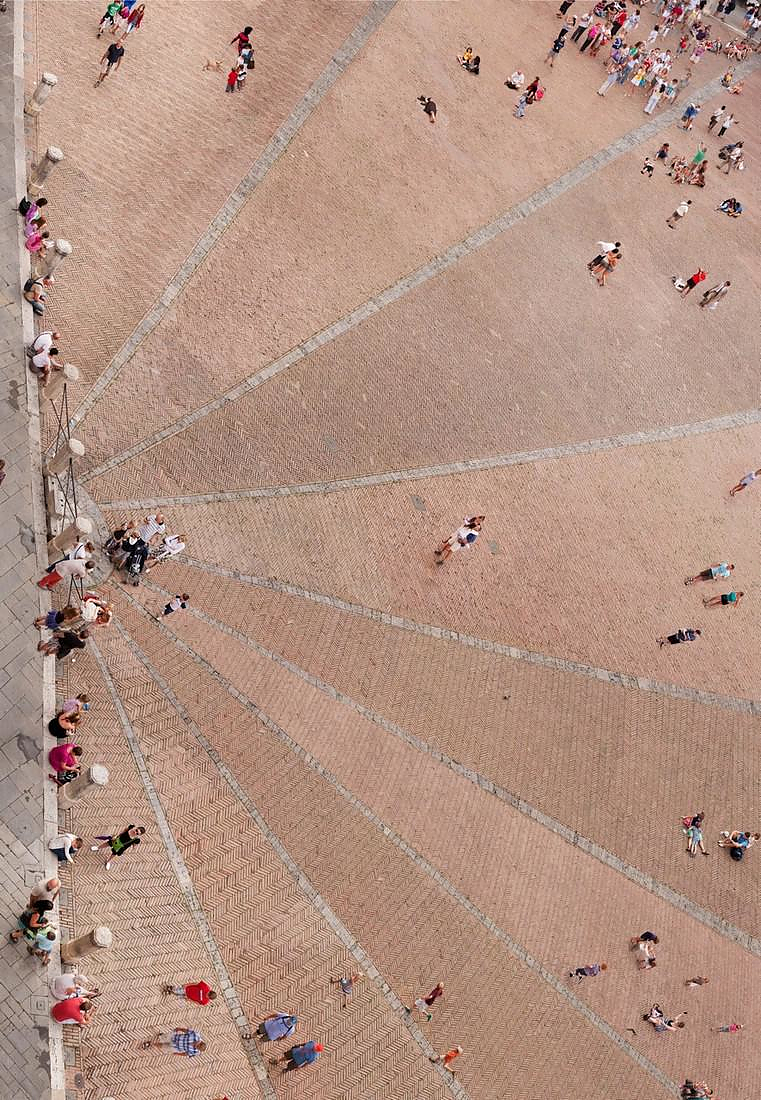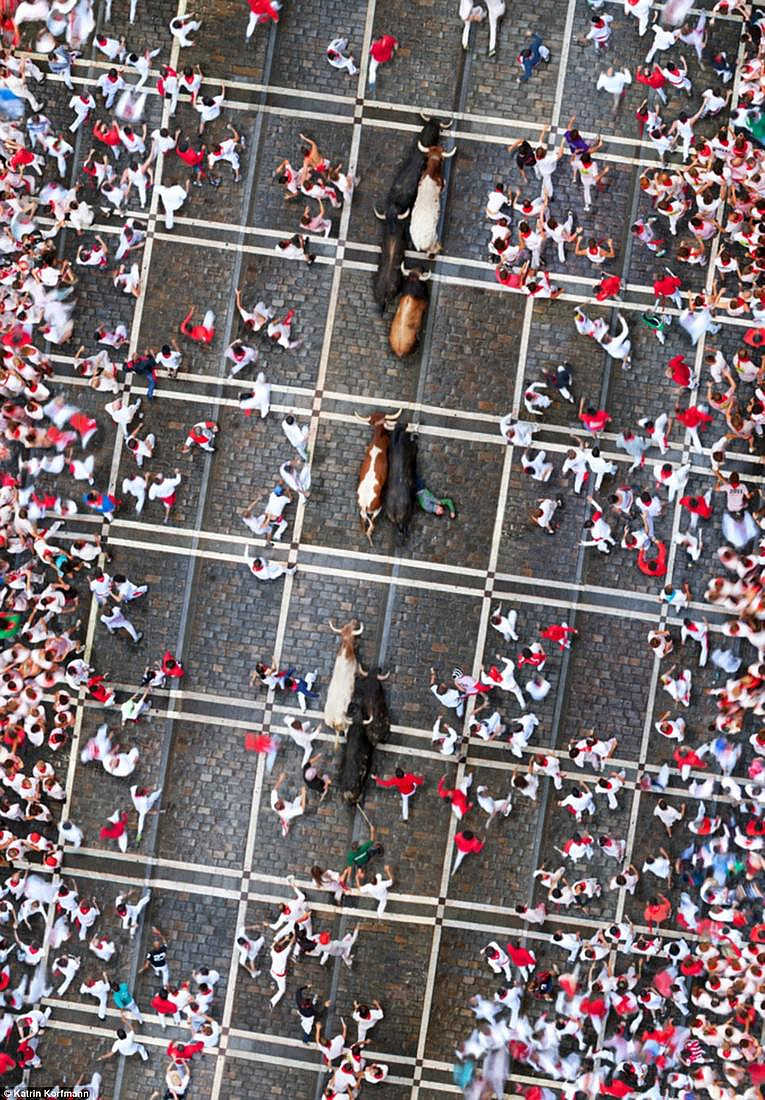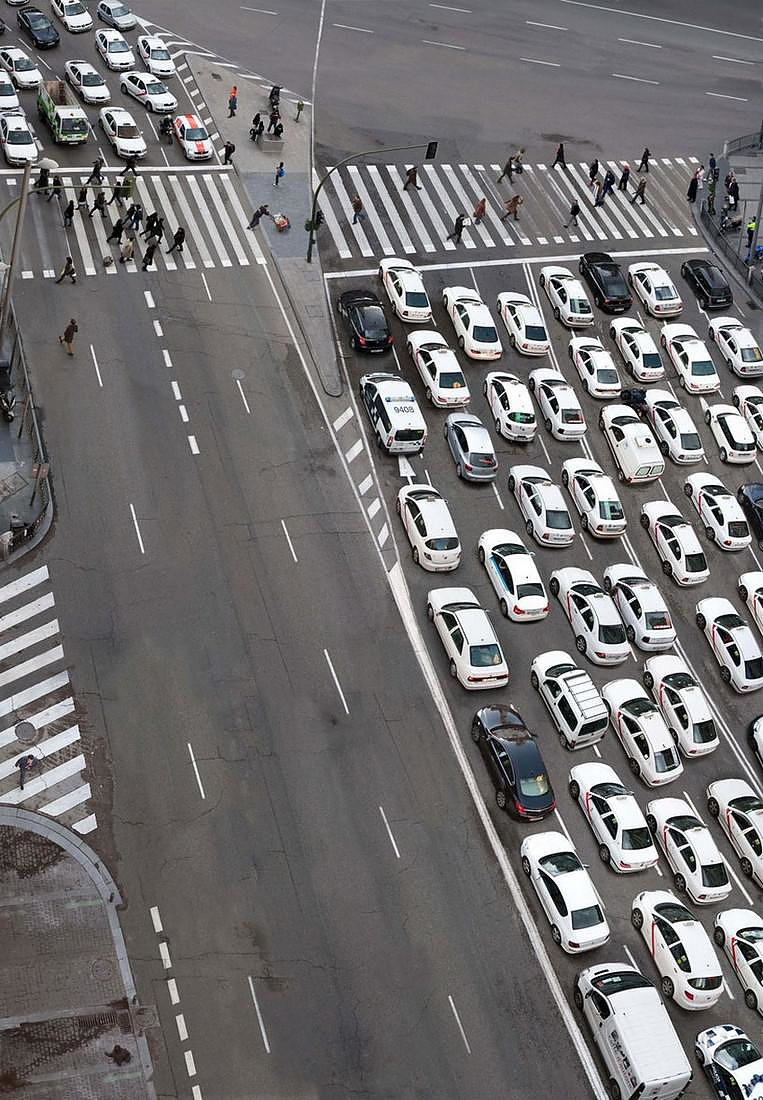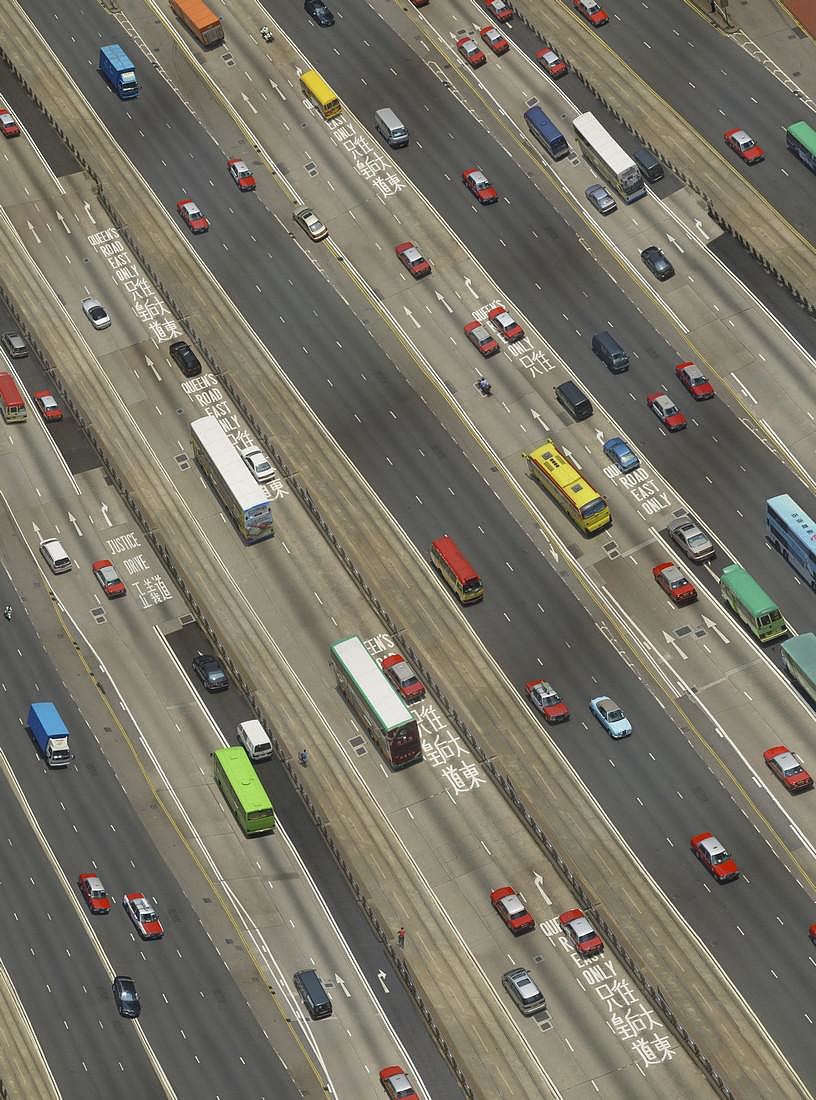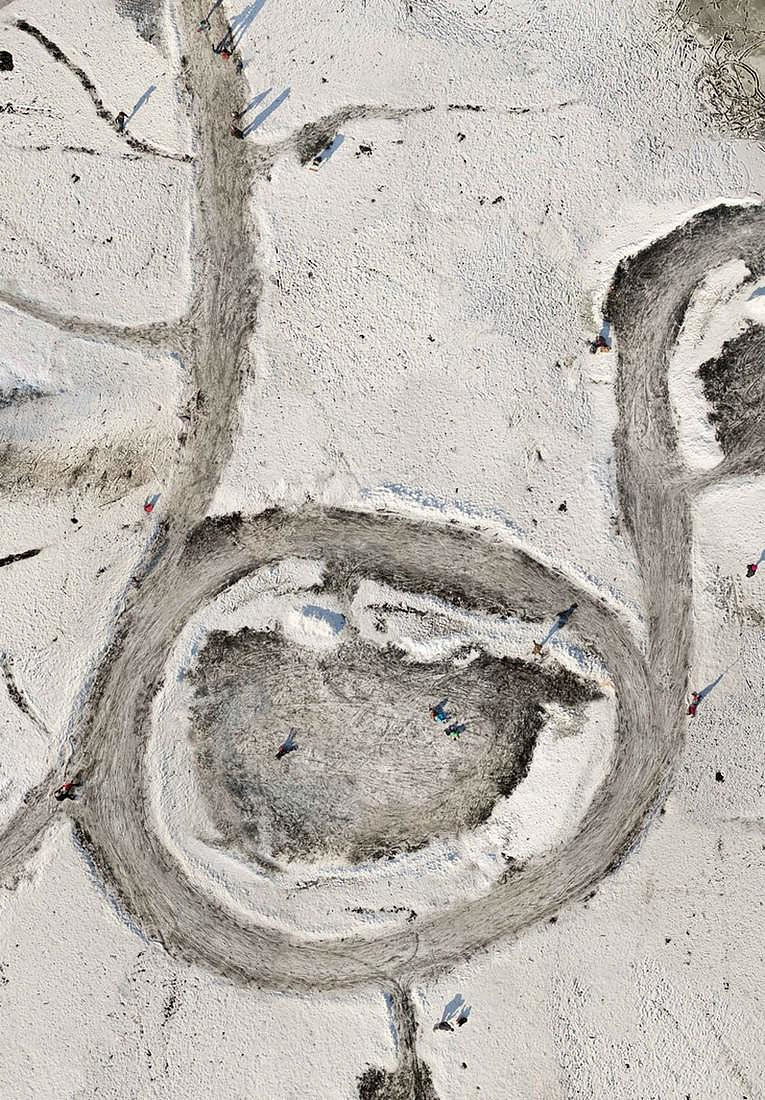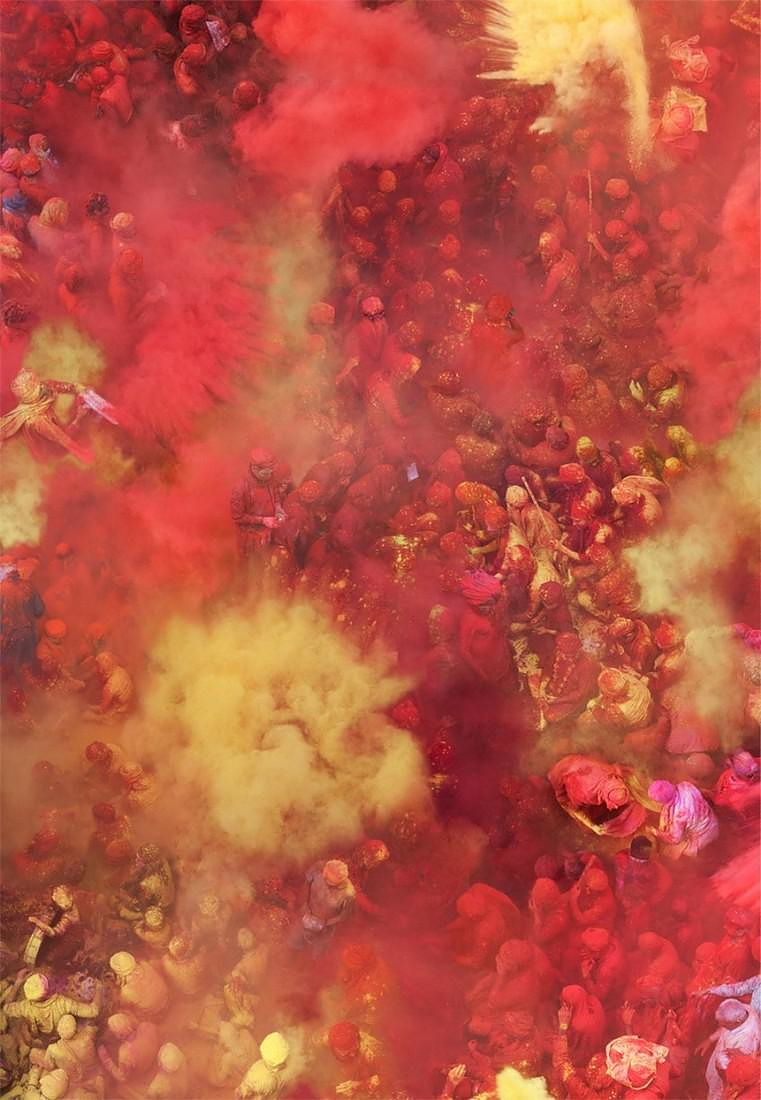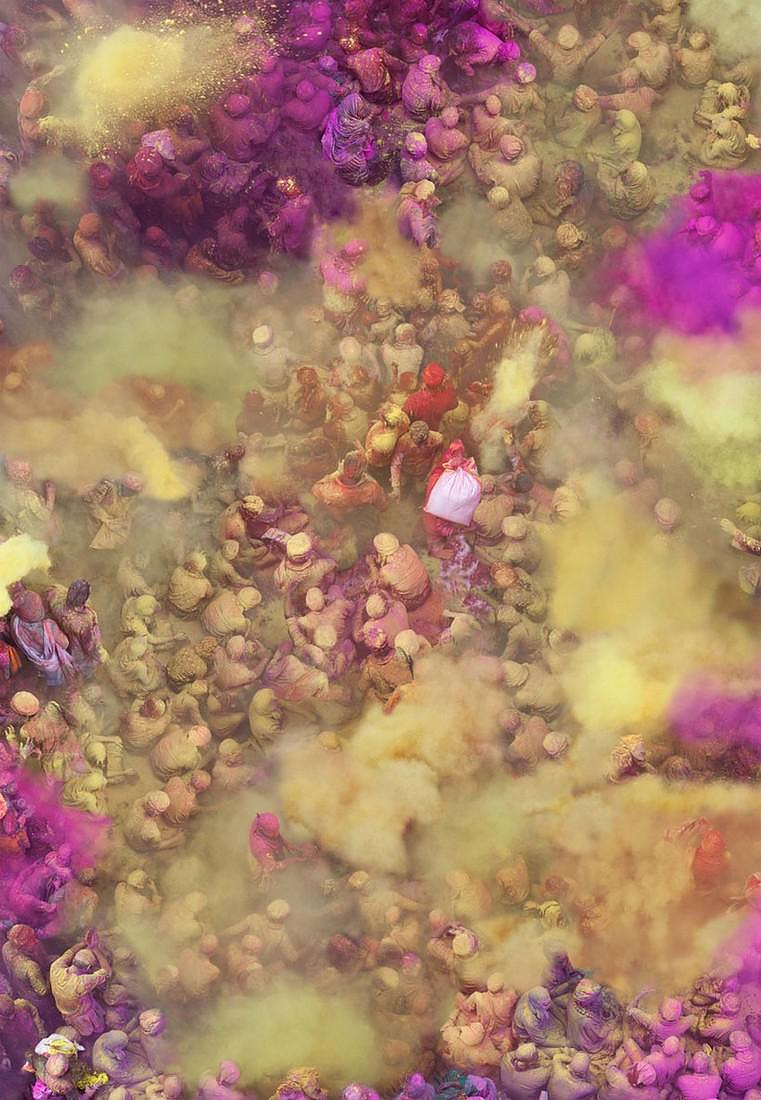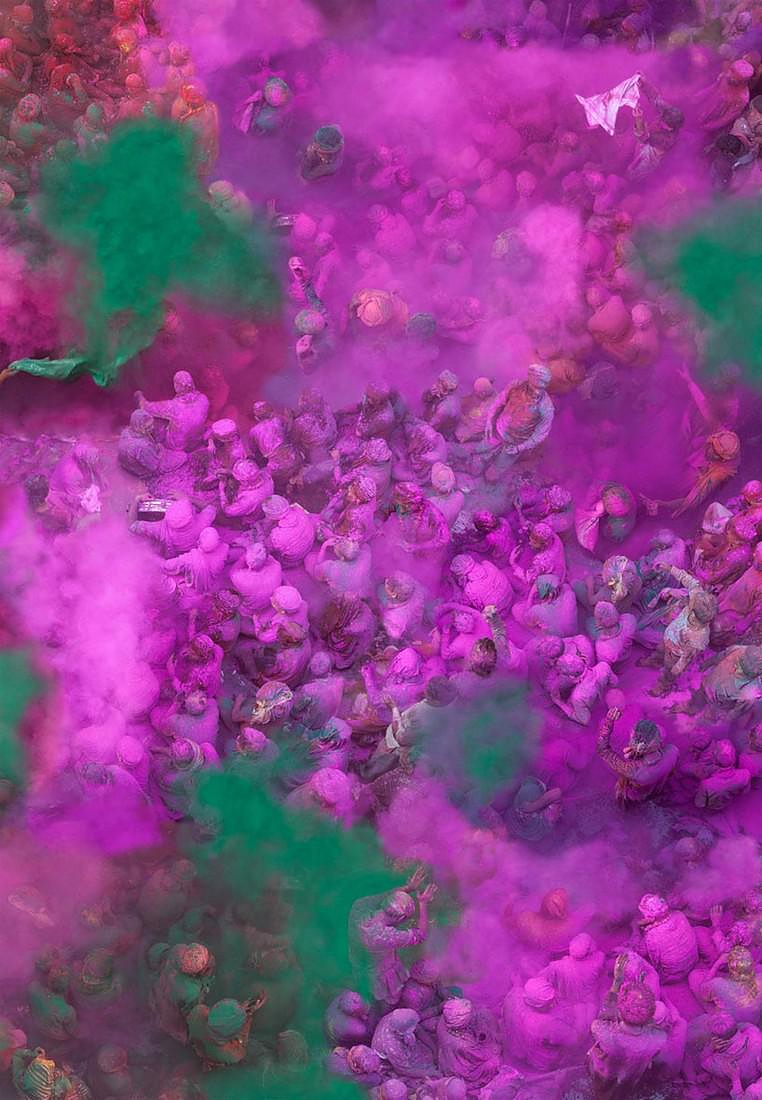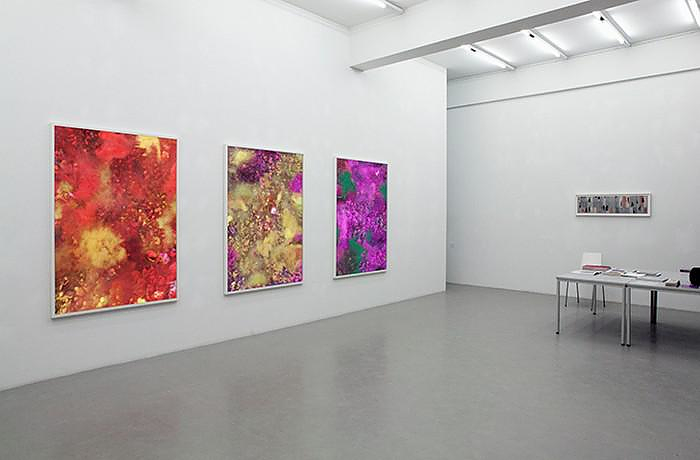German-born artist Katrin Korfmann loves taking aerial photographs of human life.
Her photos are realistic but also contemporary in order to reinterpret the modern lifestyle in mass communities. Unlike many aerial photographers who fly on small planes, Korfmann shoots from cranes, and when cranes are not possible, she sends her camera up in a remote-controlled helicopter. Katrin Korfmann takes multiple images and then blends them together to produce the final image, a task that can take two to three months working with 500 to 2,000 shots. Since the pictures are were often shot at different timeframes, Korfmann has to manipulate the shadows and exposure to create one image that appears as if it was shot at one point in time.
“In the bird’s-eye view people look alike,” Korfmann said in an interview to Slate. “The idea is to create two dimensions: one when you see it from far away and another when you zoom in and see it from very close. Then you see all the differences: in the clothes they wear, the things they carry.”
The photos that have been shot at sites around the globe, are always captured from various perspectives overhead against natural monochrome grounds. These monochrome surfaces place the events at first sight in a strikingly abstract context, against which people from disparate cultures seen from above do not necessarily appear so different.
In her photographs, color and forms have a special meaning. They are now a reference to mass culture, to a distinguished, intimate or “foreign” place and tradition. The progression of time becomes visible by layering several recordings of a given place together to construct a singular image. Various instants in time are linked together as if they took place at the same moment, offering a spatial experience of the progression of time.
Katrin Korfmann grew up in Berlin, and she now lives and works in Amsterdam. She studied at Kunsthochschule Berlin and Rietveld Academie in Amsterdam, where she specialized in photography. She won several prizes for her work, including Radostar Prize (CH) in 2012, Prix de Rome (NL) in 2003 (category of Art in Public Space 2nd), Mama Cash Award (NL) in 2000 and Esther Kroon Award (NL) in 1999. Since the late nineties she exhibited her work in The Netherlands and abroad in galleries, museums, alternative art institutions and public spaces.

